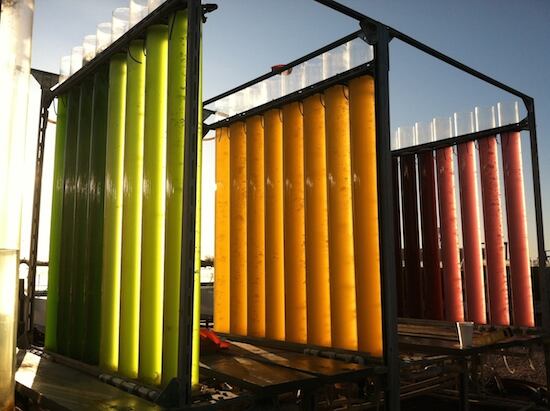Located in the southeastern Phoenix suburb of Mesa, AzCATI is a branch of ASU’s engineering school. As such, the center concentrates on the engineering problem that algae production presents: Of the myriad ways in which the microorganisms can be grown and harvested, which are the best?
Valley of the Sun
The center had its genesis in a US Department of Energy assessment the Phoenix area was ideal for photosynthetic algae culture, said Tom Dempster, an associate research professor at the university. “In the early ‘80s the DOE aquatic species program identified the Valley of the Sun (as the Phoenix metro area is called) as one of the best places on earth for algae, because of our sunlight, our temperatures and our saline groundwater,” Dempster told NutraIngredients-USA.
AzCATI was established in 2010 as a public/private partnership in collaboration with Science Foundation Arizona following years of research by ASU faculty into the microorganisms. Algae company Heliae, itself spun out of research conducted at ASU, has been a partner all along, and Health Enhancement Products Inc. (HEPI), Cellana and Florida Algae have cooperated as well.
“We were established basically to serve as a physical and intellectual hub for algae research in the state. Our goal was to become a national entity with collaborators across the country and ideally internationally,” said John McGowen, director of operations and program manager for AzCATI.
Fuel lights the fire
As has been seen elsewhere in regards to algae development, mankind’s insatiable need for energy drove developments in Arizona. Biofuels were a priority for US policymakers in the ‘80s as they are now. At the time, there was much hand wringing over the putative ‘end of oil’. That projected apocalypse, in which petroleum production worldwide would enter an irreversible steep decline, has been deferred by new discoveries and new technology in the petrochemical industry, but the concern over reliance on foreign oil supplies has not diminished. Some of the funding for algae biofuels has come from the Department of Defense and has led to the successful demonstrations in US Navy aircraft of jet fuel produced from algae.
So it is technically possible. But can it be done cost effectively? While the US military might be willing to pay more for a domestic—and therefore secure—source of fuel, open market buyers are less picky. Fuel is priced on a ruthless commodity basis.
“The fundamental technology to grow algae, get oil out of it turn it into fuel, that is all doable and has been demonstrated. But scaling that technology up and scaling it cost effectively, that is the difficulty, especially when you are contending with a significantly entrenched oil industry,” McGowen said.
This led AzCATI to help companies look at other ways to make money from algae. Many companies are now swinging to the idea that it pays to have a number of irons in the fire.
“There is a relatively long history with respect to research into algae at ASU. Numerous faculty on the Tempe campus (ASU’s main branch in another Phoenix suburb) have a lot of experience on photosynthetic microorganisms. We’re a little agnostic here. While a lot of money comes from fuels research, we are looking also at high value co-product and multi-product strategies,” McGowen said.
“Companies are sensitive to the idea of being able to make money early on. If you are diving right into fuels, the overall risk is high. If you can get more for your products (as is the case with value-added dietary ingredients) you can absorb more development costs,” he said.
AzCATI has been at the forefront of a number of algal ingredient developments. AzCATI has helped Heliae develop its astaxanthin production platform and has cooperated with HEPI in looking into the range of (as yet unspecified) bioactive ingredients it intends to extract from algae. The center is also validating Toronto-based BlueOcean’s container-based, self-illuminated technology for omega-3 oil production.
BlueOcean is providing its own light, but in the main most of the research at AzCATI focuses on photosynthetic technologies that are using solar radiation, whether in photo bioreactors or in open raceway ponds. A partial exception is Heliae, which has a adopted a “mixatrophic” approach that employs both fermentation and photosynthesis at various stages of its production process.
Bright future

Regardless of how the organisms are fed or illuminated, McGown and Dempster see a bright future ahead for the sector.
“The dietary supplement side of things is gaining much more traction now that companies see the importance of co-products in the fuel play,” Dempster said. “There are technical advancements and a lot more commercialization. You are seeing additional astaxanthin production come on line and I think you’ll see a lot more photosynthetic or mixotrophic omega-3 oils coming on line within the next few years.”
“My personal opinion having been involved in this space formally since about 2007 is that we will see a fairly substantial amount of fuel products coming from algae in the near term. In part that is already there,” McGowen said.
